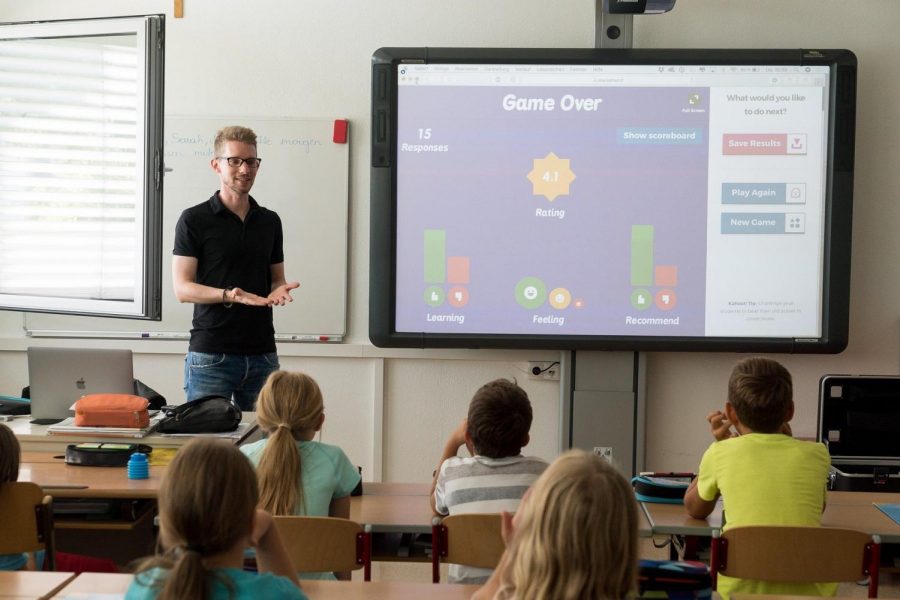The Effects of Covid-19 on Student Learning
Image by Stefan Meller from Pixabay
February 22, 2021
One of the many things people have been worrying about during this pandemic is how to keep children learning and on track with their academic performance. The pandemic has kept students across the country out of school and learning online since March of 2020. While some schools have been able to have students in person recently, students are still spending a lot of time learning over Zoom. Parents and teachers alike are worried about students’ progression over this last year and are left wondering how much students are really learning and retaining. As more data from online learning periods becomes available, it becomes clear that there is good reason to worry. Students seem to be retaining less than they normally would and struggling to get the grades they want to achieve.
When comparing the academic performance of U.S. students grades 3-8 from 2019 and 2020, there are some positives and negatives. 2020 growth scores in reading seem to be similar to what they were in 2019, which is a good sign (Kuhfeld). This could possibly be because students are able to read on their own more than they are able to practice other subjects. Parents are typically more equipped to help students practice reading than they are to teach them specific math strategies. This was reflected in MAP test scores, where students underperformed in math. Math scores were on average about 5-10 points lower this last fall than they were for the same grade students in the 2019 (Kuhfeld). The change in math gains from pre-Covid to Covid learning is significant and concerning. While the lack of a drop in reading is a relief, math poses concerns, not only for this year, but for after students are back in class as well. Teachers may find themselves adjusting curriculum in the future to accommodate for topics that need to be retaught or skills that did not properly develop.
Students are struggling in high school too. There aren’t many standardized tests to compare like there are for the lower grade levels, likely because many colleges have decided to go test optional for admissions, and in turn less juniors and seniors feel the need to take tests like the ACT or SAT. However, 2020 spring and fall semester grades are available for comparison, and they are also lower than normal. Students are struggling to maintain grades they normally would have no issue earning. Schools in California have reported up to 50% more failing grades for mid-semester progress checks than they’ve had in years passed (Woolfolk). Suddenly seniors in high school are finding themselves failing classes they need to pass to graduate and struggling to earn the points to bring their grades back up. School districts are working to remedy these poor grades, and seem to have found at least some solutions; failing grades have decreased since the spring of 2019, presumably as students and teachers have grown more accustomed to online learning.
Although the pandemic has caused obvious issues for a lot of students, online learning is not a completely lost cause. It can work for a lot of people, if done effectively. When students have consistent access to a computer and internet, they are able to work at their own pace and on their own schedule. However, this lack of structure can cause problems for students who are not used to it and don’t have enough academic motivation to police themselves when it comes to school. Online classes also create a lot more flexibility and tend to take less time. Hybrid learning at most schools has significantly reduced the time students spend with the teachers. This can be great for college students with busy schedules. This is not as good for elementary and high school students because they are expected to learn the same curriculum that was used in previous years, but with less time actually being instructed.
Covid-19 has exposed a lot of students to online learning who otherwise would not have experienced it. Some might have even found that they prefer it to the typical in person experience. Statistically, however, most students have found this period of online learning to be difficult. Hopefully teachers and administrators are able to adjust and properly aid their students to get them to where they need to be academically. The good news is that as vaccines are distributed, more and more schools are transitioning to hybrid learning with in person time and will eventually get all the way back to a normal schooling experience.
Sources
Kaur, Bhupinder. “6 Differences Between Online Learning vs Classroom Learning in 2021 [Updated].” Henry Harvin, 16 Feb. 2021, www.henryharvin.com/blog/e-learning-vs-classroom/.
Kuhfeld, Megan, et al. “How Is COVID-19 Affecting Student Learning?” Brookings, Brookings, 3 Dec. 2020, www.brookings.edu/blog/brown-center-chalkboard/2020/12/03/how-is-covid-19-affecting-student-learning/.
Woolfolk, John. “Coronavirus: Failing Grades Spike in Bay Area Schools with Distance Learning.” The Mercury News, The Mercury News, 3 Nov. 2020, www.mercurynews.com/2020/11/01/coronavirus-failing-grades-spike-with-fall-term-distance-learning/.





